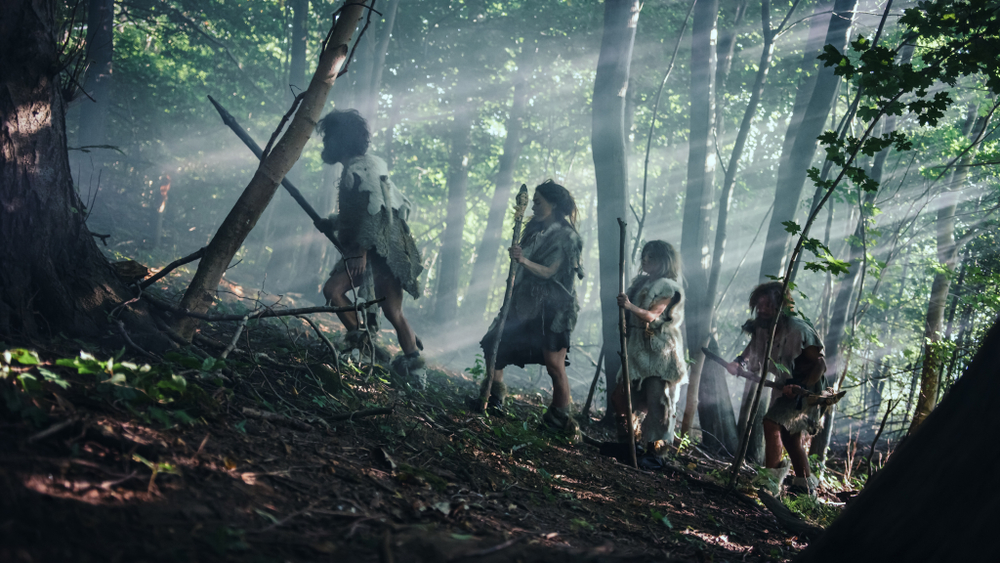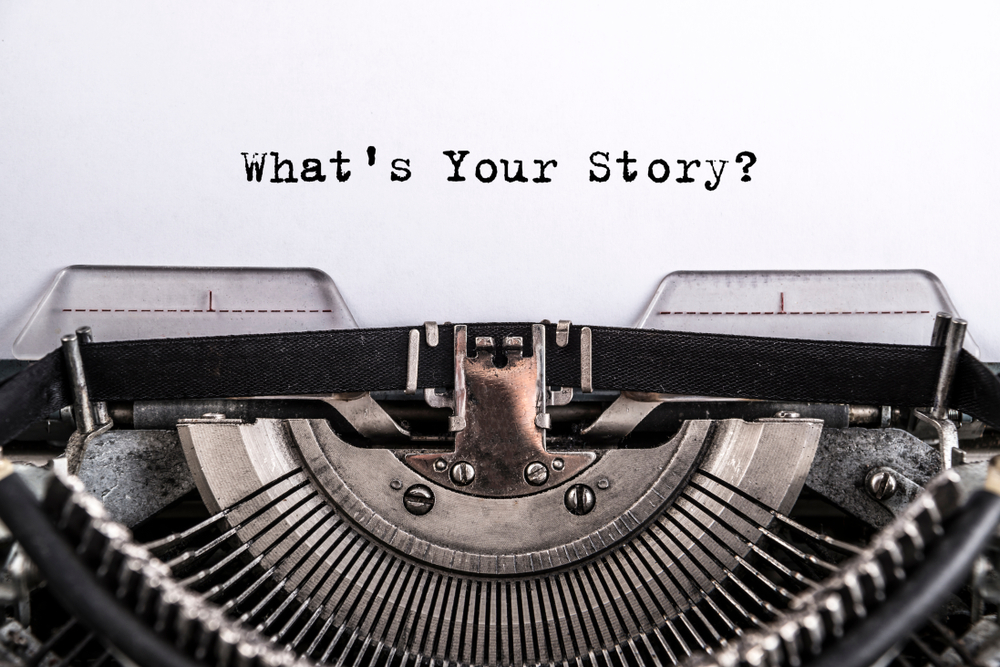A Journey Through the Evolution, Neuroscience, and Social Impact of Stories that Shape Our World
From the enchanting fairy tales of childhood to the riveting novels and films that captivate us as adults, stories hold a unique and irresistible power over the human psyche. But what is it about storytelling that makes it so universally appealing? In this article, we delve into the fascinating science behind storytelling and unveil the reasons why our brains are inherently drawn to narratives.

I. Unearthing Our Ancestral Roots: The Evolutionary Power of Stories
Our deep-rooted affinity for storytelling can be traced back to the dawn of human civilization. Language, as it developed among early humans, gave rise to storytelling as an essential means of transmitting knowledge and wisdom that were crucial to the survival of the tribe (Scalise Sugiyama, 2001).
Anthropologists and evolutionary psychologists propose that our brains have evolved to crave stories as a result of natural selection. Storytellers who could weave captivating tales packed with vital information increased their chances of passing on their genes, thus reinforcing the human brain’s predisposition for storytelling (Dunbar, 1998).
It’s like a game of “telephone.” Just as passing information down the line reinforces the accuracy of the original message, storytelling has evolved to be an effective way to accurately inform generations upon generations. It’s no wonder why we are still so drawn to stories today — they have become hardwired into our brains! While we may not be dodging predators on the Savannah or staving off starvation, stories still offer us invaluable lessons that are just as important for our survival.
For example, the Bible is full of stories that have been passed down from generation to generation, teaching us lessons about morality and righteousness. These tales remind us of who we are and how we should live our lives — a sentiment that resonates with people across cultures and religions.
In many ways, storytelling has become an essential part of being human. We use stories to cope with life’s challenges, and they help us make sense of our experiences. For example, after a traumatic event such as a natural disaster or even a personal tragedy, we often turn to narratives that provide comfort and solace in times of distress.

II. A Glimpse Into the Brain: The Neuroscience of How We Process Stories
Recent breakthroughs in neuroscience have provided valuable insights into how our brains process stories. When we read or listen to a story, various regions of our brain are activated, encompassing language-processing areas such as Broca’s and Wernicke’s areas, as well as regions responsible for processing sensory input, emotions, and memories (Mar, 2004).
An engaging story has the power to stimulate our entire brain. For instance, when we read about a character touching a hot stove, our somatosensory cortex – which processes tactile sensations – becomes active. Similarly, emotionally charged scenes trigger a response in our amygdala, the emotional center of our brain (Hsu et al., 2015).
Neuroscientific research has also revealed that the same areas of our brain light up when we undergo an experience ourselves or read about it in a story. This phenomenon, known as neural coupling, suggests that stories enable us to experience events, fostering empathy and understanding vicariously. (Zunshine, 2006)

III. The Social Fabric of Storytelling: Fostering Connection and Belonging
Storytelling has always been an inherently social activity. In ancient times, people would gather around campfires to share stories that strengthened their bonds with one another and preserved their collective history. Even today, we connect with others through our shared love for books, movies, and television shows.
This social dimension of storytelling is more than just a byproduct – it plays a crucial role in our psychological well-being. Studies have demonstrated that humans possess an innate need for social connection (Baumeister & Leary, 1995), and stories help fulfill this need by fostering a sense of shared experience and belonging.
When we listen to a story, we feel understood, respected, and accepted. We also gain insight into the lives of others and identify common threads that unite us all. On a larger scale, stories can even be used to bring about social change. For example, the power of storytelling has been harnessed by numerous campaigns fighting for human rights, racial equality, and other social causes.
By strengthening our connection to one another, stories can create a more kind and compassionate world. We may not always agree with the opinions of others – but through storytelling, we can find understanding and learn to value the perspectives of those around us.

IV. Stories as the Architects of Our Reality: Shaping Our Worldview
Stories are not mere vehicles for entertainment – they wield the power to mold our understanding of the world. From ancient myths and parables to contemporary news articles, stories have always served as a primary means of communicating values, beliefs, and cultural norms.
Our brains instinctively seek patterns and meaning in the world around us, and stories provide a convenient framework for organizing complex information. When we encounter new information, we subconsciously attempt to integrate it into a familiar narrative structure, which in turn enhances our ability to process and retain the information (Graesser et al., 1994).
Moreover, stories grant us access to diverse perspectives and experiences, allowing us to see the world through the eyes of others. By exposing us to a wide array of viewpoints and experiences, stories encourage empathy, tolerance, and understanding, shaping not only our individual worldviews but also the collective consciousness of society (Green & Brock, 2000).

V. The Spellbinding Art of Storytelling: Capturing the Human Imagination
While delving into the science behind storytelling offers invaluable insights into our innate love for narratives, it is crucial to remember that storytelling is also an art form. Masterful storytellers possess the ability to enrapture our attention, ignite our imaginations, and evoke profound emotions.
A truly captivating story often features:
- A relatable protagonist: Complex, flawed, and human-like characters foster a stronger connection with readers, who can easily imagine themselves in the protagonist’s shoes (Oatley, 1999).
- Conflict and tension: Introducing conflict and tension, either through external obstacles or internal struggles, keeps readers engaged by generating suspense and anticipation.
- Emotional resonance: Emotionally charged moments in a story, spanning the entire emotional spectrum, can forge a deep bond between the reader and the narrative (Miall & Kuiken, 2002).
- A well-structured plot: A gripping plot with a distinct beginning, middle, and end, peppered with unexpected twists and turns, can hold the reader’s interest until the very last page.
- Vivid descriptions and imagery: Rich, sensory details can transport the reader into the world of the story, making the narrative more immersive and realistic.
VI. Conclusion: The Timeless Magic of Storytelling
In today’s fast-paced world, replete with technology and a relentless flow of information, it is easy to underestimate the simple yet profound power of stories. As we have explored throughout this article, our brains are biologically programmed to seek out and engage with stories. From an evolutionary standpoint, storytelling has been indispensable to our survival, while at a psychological level, it satisfies our need for social connection, empathy, and understanding.
As the art and science of storytelling continue to evolve, we discover new ways to tell and consume stories – from podcasts to virtual reality experiences. As long as humans possess the capacity to imagine and connect, stories will remain an essential part of our lives, shaping our understanding of the world and our place within it.
In the words of acclaimed author Philip Pullman, “After nourishment, shelter, and companionship, stories are the thing we need most in the world.” Let us continue to treasure the stories that have touched our hearts and the storytellers who have kindled our imaginations – for they hold the key to our collective humanity.



